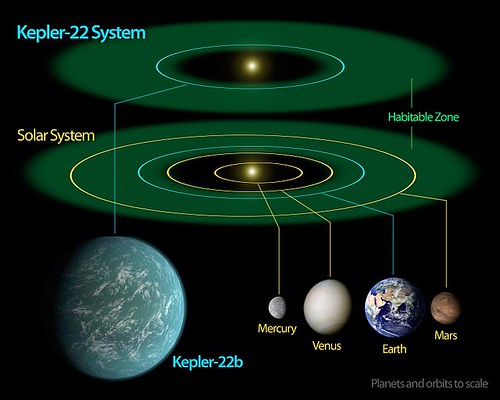Blueshift ponders… what would you like to find on an exoplanet?
- By Maggie Masetti
- February 3, 2012
- 1 Comment
We just recently blogged about some of the strange and wonderful planetary systems recently discovered. From Saturn-like rings, to miniature scale, to systems practically right out Star Wars, it seems that there are an indefinite number of possibilities out there.
Our questions to you are this:
Blueshift ponders: What kind of star system do you think it would be cool to discover, or alternatively, what would you like to find on an exoplanet? (Let’s discount “life” as an answer because we know it goes without saying!)
What are our opinions?
Maggie says: I’d love us to be able to really image some of the exoplanets we’ve discovered. We have such gorgeous images of the planets in our solar system – and there is such an interesting range of planets, from rocky to oceanic to gaseous giant – that I can’t wait until we have the capability to see what the planets in other star systems really look like.
I know we discounted “life”, but I think it would be interesting to see the range of planets that could exist in the habitable zones of other stars. (A habitable zone is the region around a star where a planet the temperatures are right for a planet to have liquid water on its surface.) Just this past December, Kepler-22b was discovered – the first confirmed extrasolar planet found by NASA’s Kepler Space Telescope to orbit within the habitable zone of a Sun-like star. That’s exciting stuff! Scientists don’t know yet if Kepler-22b has a predominantly rocky, gaseous or liquid composition. The artist’s interpretation below, which also compares Kepler-22b’s system to ours, shows it with clouds in its atmosphere. But I want to know what it really looks like!

Credit: NASA/Ames/JPL-Caltech
Sara says: I remember when I posed this question to a 5-year-old at an event… he was really hoping that we’d find a planet made of yellow Jell-O! It’s easy to think about how exciting it would be to find another Earth-like planet outside of our solar system – one with plenty of water, a protective atmosphere, and good prospects for life. But there are a lot of other things that would be interesting and useful to find in other solar systems! For one thing, how about more planets like each of our different planets, in terms of size and distance and general conditions? One of the great things about space is that you can look at lots of different objects in different phases of their lives. So imagine that you could see a Mars-like planet bring formed… and then other Mars-like planets that are more mature… and then another Mars-like planet as its system is being destroyed? Then you could learn a lot more about how Mars (and planets like it) are formed, live, and die. The formation of planetary systems is also really exciting – seeing more planet-forming disks and early systems would really enhance our understanding of how planets come to be. I’m enjoying all of the things that we’re learning as we find more and more planets. I remember when finding a planet was a really big deal, and now we’re constantly finding more candidates and progressively confirming that they’re really planets. We find a lot of normal ones, and then some really weird ones!
So now we want to know what you think! You can also respond with your opinion on our Facebook, or leave a comment here!



Modulated radio signals.